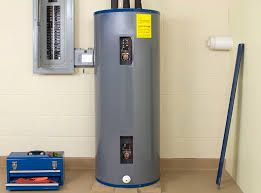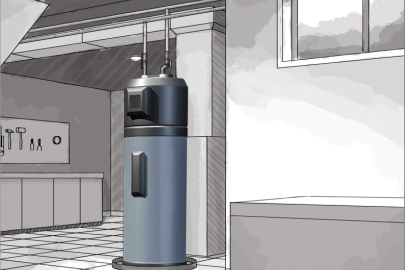How do you feel when it comes to Water Heater Maintenance Tips You Can't Afford to Forget?

Hot water is important for daily convenience, whether it's for a rejuvenating shower or washing recipes. To guarantee your hot water system runs efficiently and lasts much longer, routine maintenance is crucial. This write-up offers functional suggestions and understandings on how to keep your home's hot water system to stay clear of interruptions and costly fixings.
Introduction
Maintaining your home's warm water system may seem overwhelming, however with a few straightforward actions, you can ensure it runs smoothly for several years to find. This guide covers every little thing from comprehending your warm water system to do it yourself maintenance pointers and knowing when to contact professional aid.
Significance of Keeping Your Warm Water System
Regular upkeep not only expands the life expectancy of your hot water system yet likewise ensures it runs efficiently. Disregarding maintenance can bring about reduced performance, higher power expenses, and even early failing of the system.
Indications Your Hot Water System Demands Maintenance
Recognizing when your hot water system requires attention can stop major problems. Keep an eye out for indications such as irregular water temperature level, strange noises from the heating unit, or rusty water.
Comprehending Your Warm Water System
Before diving right into maintenance tasks, it's handy to understand the standard elements of your warm water system. Generally, this includes the hot water heater itself, pipelines, anode rods, and temperature level controls.
Month-to-month Maintenance Tasks
Routine month-to-month checks can help catch small issues prior to they rise.
Flushing the Water Heater
Purging your hot water heater removes sediment buildup, enhancing performance and prolonging its life.
Checking and Changing Anode Rods
Anode poles prevent corrosion inside the storage tank. Examining and replacing them when worn is vital.
Inspecting and Adjusting Temperature Setups
Adjusting the temperature setups makes certain optimum performance and safety.
DIY Tips for Upkeep
You can execute a number of upkeep jobs on your own to maintain your hot water system in top condition.
Checking for Leaks
Frequently inspect pipelines and links for leakages, as these can cause water damage and higher bills.
Testing Stress Relief Valves
Evaluating the pressure safety valve guarantees it works properly and avoids excessive pressure build-up.
Insulating Pipes
Insulating warm water pipelines decreases heat loss and can save power.
When to Call an Expert
While do it yourself upkeep is helpful, some problems require professional experience.
Complicated Issues Calling For Expert Aid
Instances include significant leakages, electrical troubles, or if your hot water heater is regularly underperforming.
Routine Expert Maintenance Conveniences
Expert maintenance can consist of extensive inspections, tune-ups, and making certain compliance with security criteria.
Final thought
Routine maintenance of your home's warm water system is crucial for performance, durability, and cost savings. By complying with these tips and recognizing when to look for expert help, you can make certain a trusted supply of warm water without unanticipated interruptions.
Water Heater Maintenance Tips
Test the TPR Valve
Shut off the power and the cold-water supply valve. Place a bucket under the pipe connected to the temperature-pressure-release (TPR) valve on the top or side of the tank. (This valve opens if the tank pressure gets too high.) Lift the valve’s tab to let some water out, then let go. If water keeps flowing, drain the tank partway, unscrew the old valve with a pipe wrench, and install a new one. Check the Anode Rod
Put a hose to the tank’s drain cock and let out a few gallons of water. Now fit a 1 1/16-inch socket onto the rod’s hex head on top of the heater (or under its top plate) and unscrew the rod. If it’s less than ½ inch thick or coated with calcium, buy a new one, wrap its threads with Teflon tape, put it back in the tank, and tighten securely. Use this segmented rod if headroom above the tank is limited. Drain the Tank and Wash Out Sediment
Drain the remaining water in the tank into the bucket, then stir up the sediment on the tank’s bottom by briefly opening the cold-water supply valve. Drain and repeat until clean water comes out of the hose. Close the drain cock, refill the tank, and turn its power back on. Adjust the Temperature
Find the temperature dial on the side of the tank and unscrew its cover. Adjust the dial to 120 degrees using a flathead screwdriver. For every 10 degrees the temperature is lowered, you can expect to save up to 5 percent in energy costs. Turn the water heater off or the thermostat down to its lowest setting if you plan to be away from home for more than three days. Insulate the Pipes
Buy some self-sticking 3/8-inch-thick foam pipe insulation that matches the pipes’ diameter. Slide the foam over the hot-and cold-water pipes as far as you can reach. Insulating the cold-water pipe prevents condensation in summer. Peel the tape and squeeze the insulation closed. If the pipe is 6 inches or less from the flue, cover it with 1-inch-thick unfaced fiberglass pipe wrap. https://www.thisoldhouse.com/plumbing/21016402/how-to-maintain-a-water-heater

Do you enjoy more info about How to Maintain Your Water Heater & Prolong its Life? Try to leave feedback down the page. We'd be happy to listen to your thinking about this review. Hoping that you come back again in the near future. Sharing is caring. You won't know, you will be helping someone out. I love reading our article about What Kind of Maintenance Do Water Heaters Need?.
Call Us Now